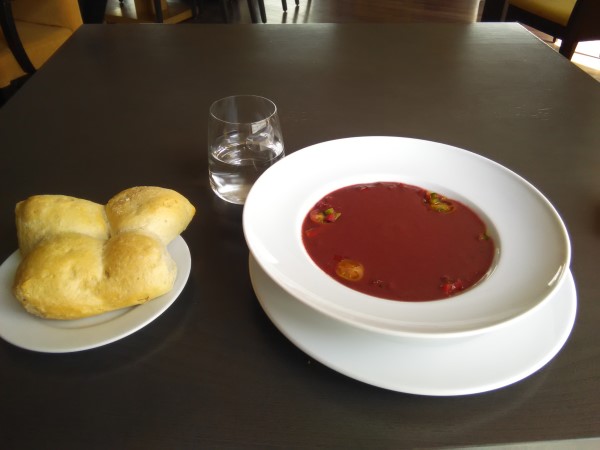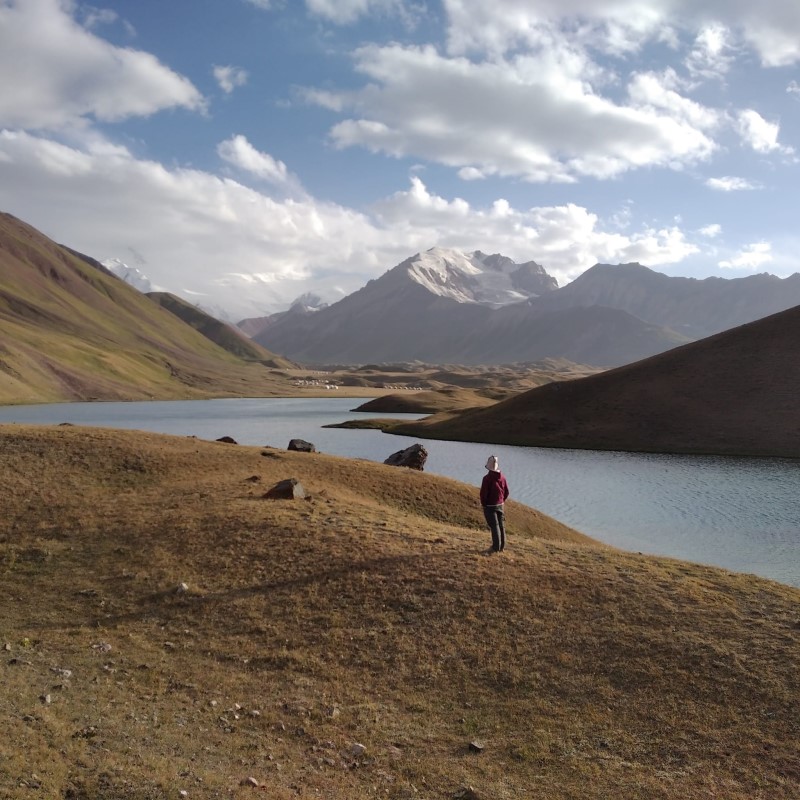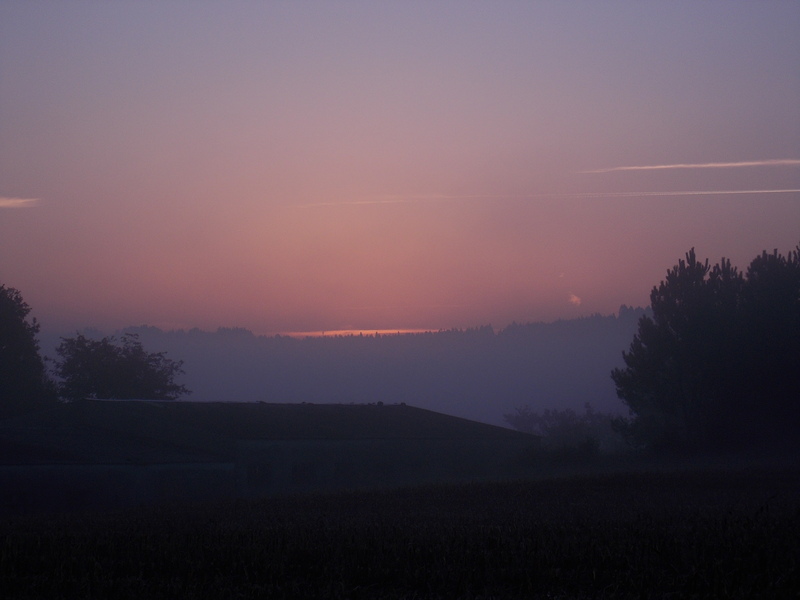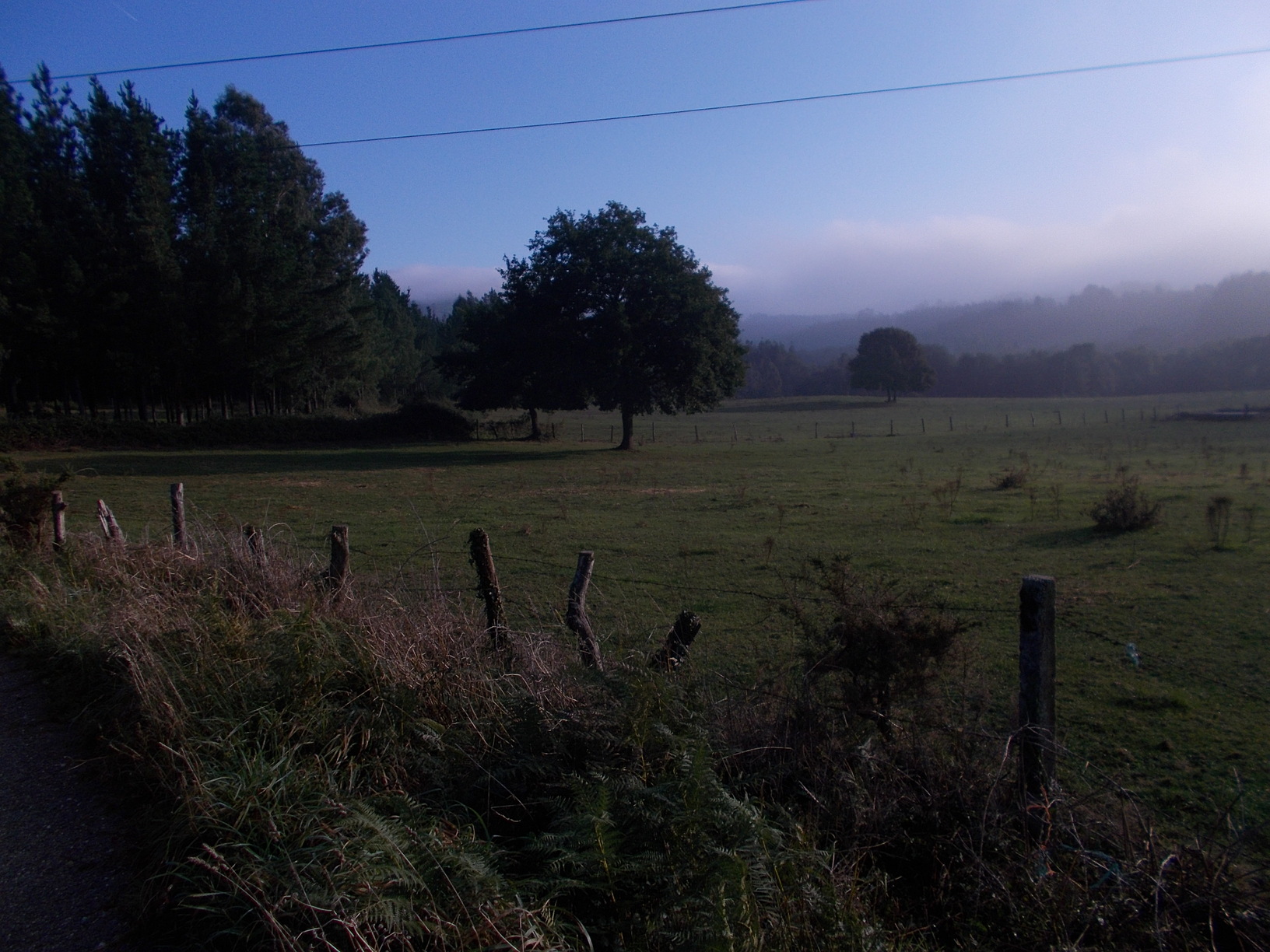Some people say one does not experience the real Camino de Santiago on bike. I cannot disagree more. First of all, there’s nothing like “a real Camino”. Each pilgrimage is unique, and each of us embarks on this journey with their own hopes and dreams. Whether we eventually get what we wanted–or the way serves us a completely different menu, is another story. On feet, on bike, on a horseback, or even on a hand-bike, we can pursue our dreams while getting closer to the city of Santiago each day.
And secondly, bike allows us to do pilgrimages we’d hardly make on feet. For example a pilgrimage starting right at our doorstep–like ancient pilgrims did it. I live more than 3,000 kilometers away from Santiago. Sure enough, I would not cover such a distance on feet, or at least not in a time I can allocate for a pilgrimage. On bike that’s possible though. To conclude this short opening, do not let others discourage you. You can do every single Camino de Santiago on bicycle, and in this post we will look at different types of bikes, and whether they are a good fit for the Camino. Let’s start.
Table of Contents
Best bike for your Camino depends on the way you want to follow
I guess I didn’t surprise you with this one. We know many pilgrimages in Spain (and outside of it). Some are more hilly, others are almost entirely flat. Some are almost entirely on asphalt, whereas others venture into mountains. We have also ways that you would struggle to navigate on bike, unless you are an extremely good rider and have a relatively light-weight luggage. We will look at all major Caminos now, and I will pick the best bike for each route.
Before we proceed to this step, however, I want to emphasize one thing: Difficulty of a way (any way you do on a bicycle) always depends on your physical abilities, and your skills on a bike. Some people can ride down volcanoes on road bikes, whereas others need a full-suspension elector bike to get to the nearest grocery story. While I will try to give you a good advice, and suggest a best bike for each Camino, you should always consider your riding abilities and shape before making the eventual decision on what bike to take, and whether to do the Camino on bike at all.
* May also interest you: Camino Frances guide, stage by stage, including info for bikers.
Camino Frances – Gravel bike or hardtail MTB is your best choice
Let’s start directly with the most popular Camino, the French way from Saint Jean to Santiago de Compostela. Though the “crossing of the Pyrenees” may sound scary, and you may wonder how anyone can do that on a bike, let alone gravel, you should know that the Napoleon route from Saint Jean to Roncesvalles follows mostly wide tracks, and a good deal of the way is covered with tarmac.
This is supposed to be the “most technical part” of the way, though in my opinion there are a few more technical sections during the first week, and than also close to Foncebadon and el Acebo. For these sections, an MTB hardtail is definitely a better choice, but if you do not mind sometimes getting down from the bike and pushing it, gravel will do on Camino Frances. I would in no way suggest doing this Camino on a road bike, though no doubt someone has tried it before… Full suspension bike is also a good choice, especially if you experience back pain sometimes, and prefer to have more comfort on your Camino.
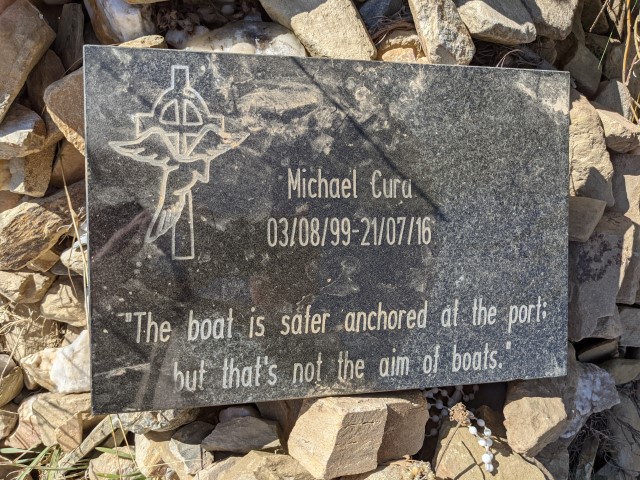
– A gravestone of a young cyclist, pilgrim, who died on his way from Foncebadon to El Acebo, Camino Frances. I typically do not take pictures of gravestones, but the inscription on this one have captured my imagination for a while… Rest in Peace Michael, boats are really not made to stay anchored in a port, nor are humans…
Camino del Norte: First week (from Irun to Bilbao) full suspension bike, the rest gravel, or even a road/city bike with durable wheels
Talking about the famous “Camino de la Costa”, from Irun to Santiago, 860 kilometers, we really have to divide it into two parts when it comes to choosing the most suitable bike. For the first week, considering that you’ll have some load on you, the only bike I’d recommend is a full-suspension mountain bike.
This part is hard, with many hills and a tricky terrain. Sure, there are detours for bikes and everything, but even some detours are pretty rugged, and if you want to follow the same Camino the pilgrims on feet follow (it is more beautiful and avoids busy roads with lousy traffic in summer), quality full-suspension bike is your best bet. If you’re an experienced rider and can get your luggage down to 7-8 kilos, you can do it also on hardtail, but get ready to suffer on certain sections.
The rest of the way, from Bilbao to Santiago de Compostela, you’ll be fine on gravel, since maybe 80% of this way follows asphalt roads, and even the rest isn’t particularly tricky, maybe with an exception of a few short steep & rugged sections which can be easily avoided on bike though, following local roads in-between the villages. I’ve seen some people doing this section on road bikes, or even one guy on a “city bike”.
And while I would not recommend it, it is doable no doubt. Just remember that once you have a road bike, you really have to rely on detours anytime the official Camino leaves the road. Sure enough, it isn’t a big deal in 21st century with all navigation tools and apps. But if you prefer to at least sometimes leave the road, opt for gravel instead or for some light hardtail mountain bike.
* May also interest you: Camino del Norte guide, stage by stage, including info for bikers.
Via de la Plata: Definitely gravel with good tires, or light mountain bike (with no suspension or front suspension)
Via de la Plata (from Seville to Santiago) is pretty flat. It follows wide dirt roads in the middle of the fields, with seemingly no end in sight. And while there are some more hilly parts later on, once you get close to Galicia or directly in Galicia, these can be navigated on gravel bike.
In my opinion, if I should pick one Camino that’s perhaps better on bike than on feet, I’d pick Via de la Plata. Because on this way you have these long stretches of endless fields and straight roads. They take long hours to cover on feet, whereas one would easily be done with every such stretch on bike in an hour or two max. Many times I wished I had a bike with me on Via de la Plate. Well, maybe next time :).
One thing you should keep on your mind though is that you should opt for new tires with good protection against punctures. I’ve seen many cyclists dealing with this problem on la Plata. The dirt roads look innocent, but those small stones can be pretty sharp, as well as the thorny plants growing on the side of the road. Thorns and sharp small rocks won’t cut your tire if it’s new, and designed for such terrain. With old tires and heavy load on your bike, however, you may end up fixing a puncture every day. That’s definitely the last thing you want to do on your Camino…
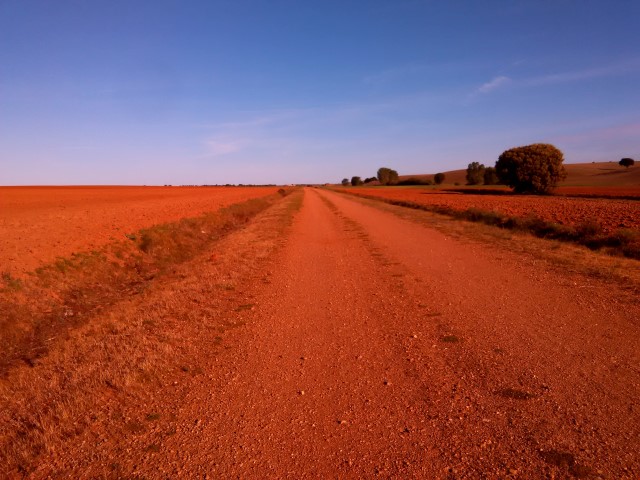
– One of the seemingly endless stretches of a dirt road on Via de la Plata (near the city of Salamanca). These roads have a certain beauty to them, for a sensitive eye, especially in the morning or in the evening on the Camino. In a scorching heat of a day, however, it is much easier to cover them on bike than on your feet.
Camino Primitivo: Mountain bike only
The “mountainous Camino” from Oviedo to Santiago has grown in popularity in recent years. And while it can get over-crowded in summer, and you may struggle to get a bed sometimes, it is definitely a nice way worth doing. But can one do it on bike? The answer is YES.
Regardless of how this Camino is advertised on many websites, and described in many guides, in my opinion it isn’t that mountainous. You have some long hills, sure, but in 90% they cover relatively wide roads, and they aren’t as steep as the hills in Basque country on Camino del Norte. Nevertheless, for the sake of a few section that are indeed technical, and also because storms are common in this part of Spain in summer, you should embark on Camino Primitivo only with a decent mountain bike.
But you do not need to be an expert downhill rider or anything similar. As long as you take precautions, make sure your breaks work 100%, and wear a helmet, and aren’t afraid of some rock here and there, you can do this Camino on a bicycle.
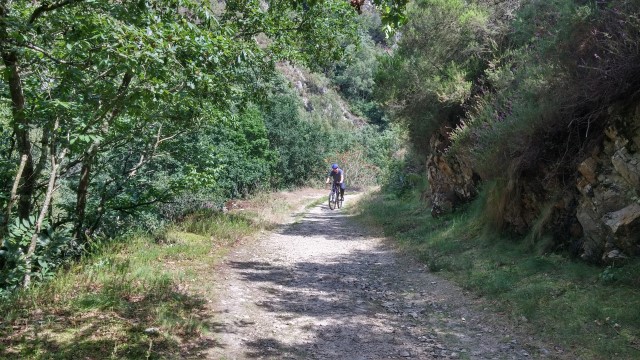
– A biker on Camino Primitivo. Up to this day I do not know if he was a pilgrim (having his luggage transported to the next place), or just a local guy of Asian origin biking along the trails. In any case, most “mountain” roads on Camino Primitivo look like this–they are wide with a relatively easy terrain for a good mountain bike (and a decent rider :))
* May also interest you: Camino Primitivo guide, stage by stage.
Camino Portuguese – Gravel bike will do, road bike with thicker wheels is also an alternative
It isn’t that typical seeing people doing Camino Portuguese on bike, for a simple reason: the stretch from Lisbon to Porto is just horrible–main roads with lot of cars, and the rest from Porto to Santiago is just too short for a decent bike trip (only 250 kilometers of easy terrain). An excellent cyclist can cover the distance in one-two days, and even a slow one will do in four. Hence cyclists looking for more of a “camino” experience opt for longer caminos.
Anyway, if you decide to do the Portuguese on bike, you do not have to worry about the terrain. With an exception of a few short stretches (where you can always push your bike) this is an easy Camino with a few hills only. Ideal for a bigger group of friends or even beginner riders embarking on their first longer trip. Test the waters here, and if you like it, perhaps you can do Via de la Plata (1,000 kilometers) or Camino del Norte (860 kilometers) the next year…
Camino de San Salavador–only for experienced mountain bikers in a great shape
San Salvador isn’t a typical cyclist choice. It isn’t a typical pilgrim’s choice either. However, if you like the mountains, and prefer solitude to crowds, with an occasional meeting with pilgrims and locals, you should incorporate it in your itinerary. Those who do San Salvador will often connect it with Primitivo, or they will depart from the French way for a while, just to return to it later.
Anyway, the central part of this Camino has real mountains, single-tracks, and tricky rocky terrain. While this may be scary for most people, for true mountain biking lovers it is an excellent terrain, as long as the weather is good. Hence if you are an experienced rider, have great full-suspension mountain bike, and enjoy steep technical downhills and uphills, you can go ahead and try to do San Salvador on bike. I am sure less than 10 people do so every year. Just make sure to plan enough time for this Camino. On most ways you’ll be much faster on bike than on feet. For San Salvador, however, you should count with 4-5 days at least, regardless of your means of transport.
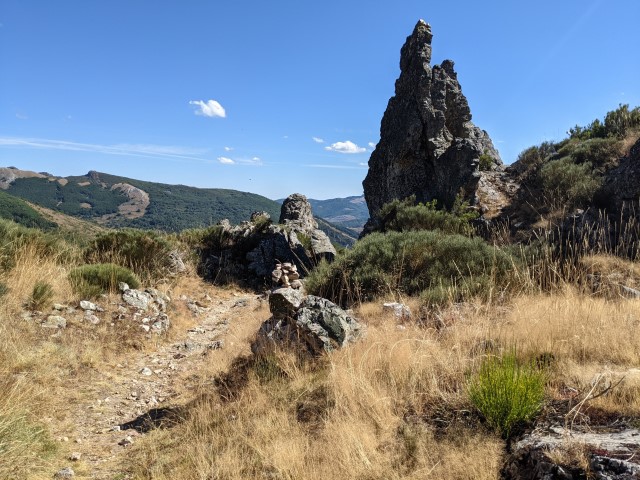
– “singletrack” on Camino San Salvador. Such narrow rocky paths may look scary for a typical pilgrim, but true lover of mountain biking will cherish every kilometer on them. And you’ll enjoy many kilometers of such trails on San Salvador…
Final thoughts
I hope you can see by now that there isn’t one correct answer to the question: what’s the best bike for Camino de Santiago? It really depends… first and foremost on the way you follow, but then also on your skills, preferences, and whether or not you want to follow the way for pilgrims on feet, or opt for road detours whenever possible.
If you cannot decide, take a full suspension bike, regardless of your Camino. You may suffer on it on road sections, but it will have you covered on rugged sections, and it will make it easier for you on an occasional rainy day (if you experience any on your Camino, hopefully you won’t :)).
Last but not least, make sure to wear a helmet at all times, and pay attention to what’s going around you. If you aren’t sure you can navigate some section, get down and push your bike. Some pilgrims on bikes die on the Camino every year–mostly having an accident on a road, with a car. And while we never know what will happen to us, you can minimize a risk of an accident (or other unpleasant event) riding safely, and always keeping your eyes open. Buen Camino!
May also interest you:



![Ultralight Packing List for Camino de Santiago [2025 Edition]](https://caminolovers.com/wp-content/uploads/2022/03/altra-shoes-640-x-480.jpg)
